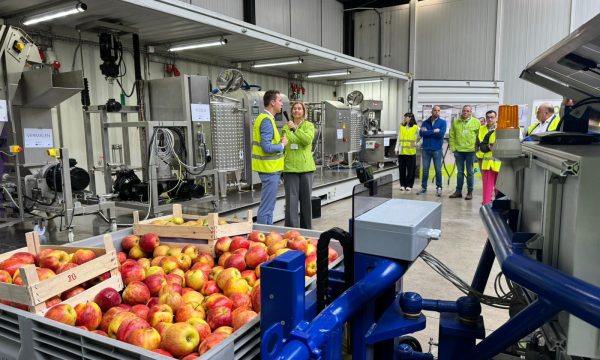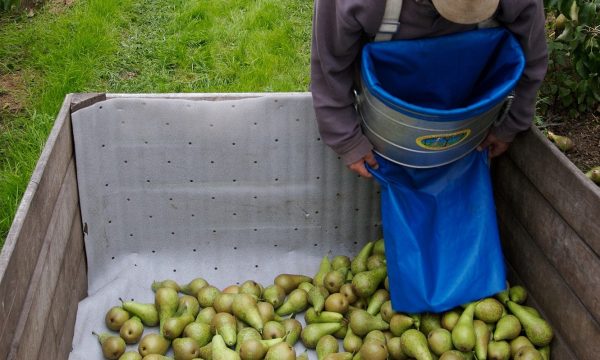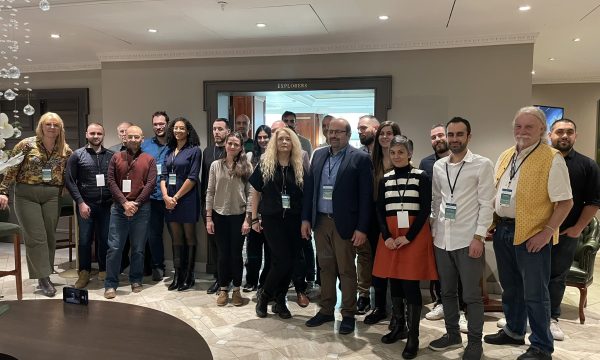Project news What if irrigation water from lettuce, carrots and strawberries contains toxic microcystin?
CYANTIR, an FPS project with UGent as coordinator and partners ILVO, Sciensano, Inagro and ULG, studies under controlled conditions the potential accumulation of toxic microcystin in lettuce, carrot and strawberry. The ultimate goal is to formulate a policy and to propose guideline values for which microcystin concentration in water sources is unsuitable for irrigation of (mainly) raw fruits and vegetables.
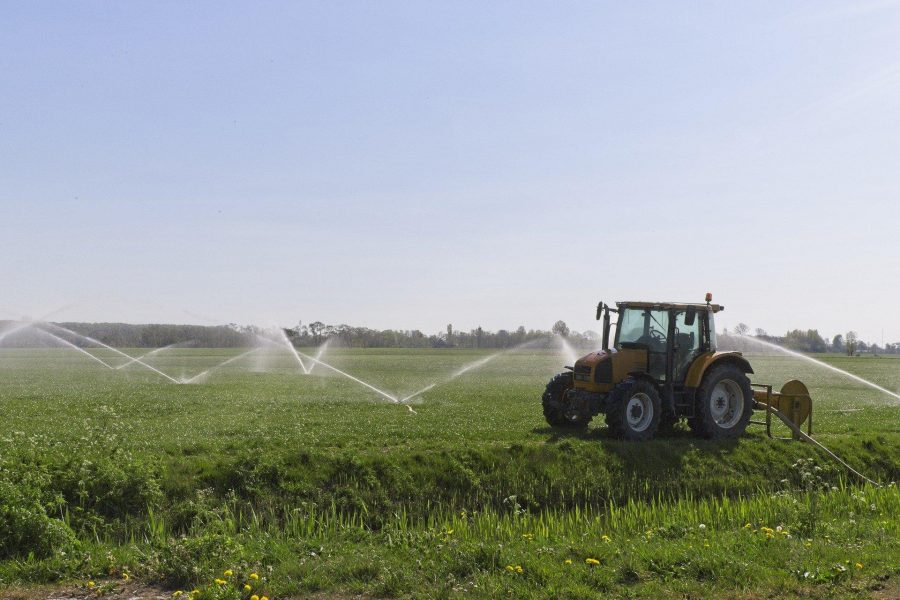
Due to climate change and eutrophication, an increase of cyanobacteria (blue-green algae) blooms is observed in canals and open surface basins, water sources that are also used for irrigation of agricultural crops during droughts. Microcystis aeruginosa is the main cyanobacterial bloom in Belgium and produces microcystin (MC), a hepatotoxin that damages the liver and has tumor-stimulating effects. It is known from literature that microcystins can be transmitted to plants by the use of contaminated irrigation water. The CYANTIR project therefore investigates whether irrigation water contaminated with microcystin (= a cyanotoxin) poses a health risk in terms of residual concentrations of microcystin that accumulate on or in the crop. Indeed, the ingestion of cyanotoxins - produced by flowering cyanobacteria - via contaminated water and food is an important source of exposure for humans. In our region, contamination occurs mainly during recreation (water sports). Usually the symptoms are limited to skin irritations, headaches, diarrhea, and gastrointestinal complaints.
For carrots, lettuce and strawberries, first of all the edible parts of the plant, respectively the root, the leaves and the fruit, are analyzed for cumulative exposure to microcystin (MC) concentrations. In greenhouse trials, three typically consumed raw crops (lettuce, carrot and strawberry) are irrigated with water loaded with two concentrations of the microcystin congener LR (MC-LR) in the last month of growth. A commercial, pure MC-LR is used for these irrigation trials. The concentrations of MC LR used are in accordance with the permissible threshold values for drinking and recreational water, namely 1µg L-1 and 20 µg L-1. For strawberry, the dynamics of uptake in the plant as a function of the irrigation method is also checked. The level of MC-LR present on and in the crop will be determined at 3 time points (1 week before harvest, at harvest and 1 week after storage) by project partner Sciensano using an LC-MS/MS method.
This method will contribute to a risk assessment for the edible parts of the crops. Specifically, this research will generate quantitative data to calculate the risk of human exposure to MC through consumption of fresh fruits and vegetables. Based on toxicological data, a safe limit for MC in irrigation water could be proposed.
Funding from
FOD Volksgezondheid, Veiligheid van de Voedselketen en Leefmilie
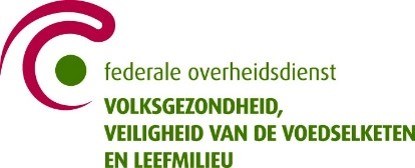
Questions? Contactact us!
| Bart Cottyn Onderzoeker ILVO 09 272 24 18 Bart.Cottyn@ilvo.vlaanderen.be | |
| Andreja Rajkovic Prof. UGent 09 264 99 04 Andreja.Rajkovic@UGent.be | 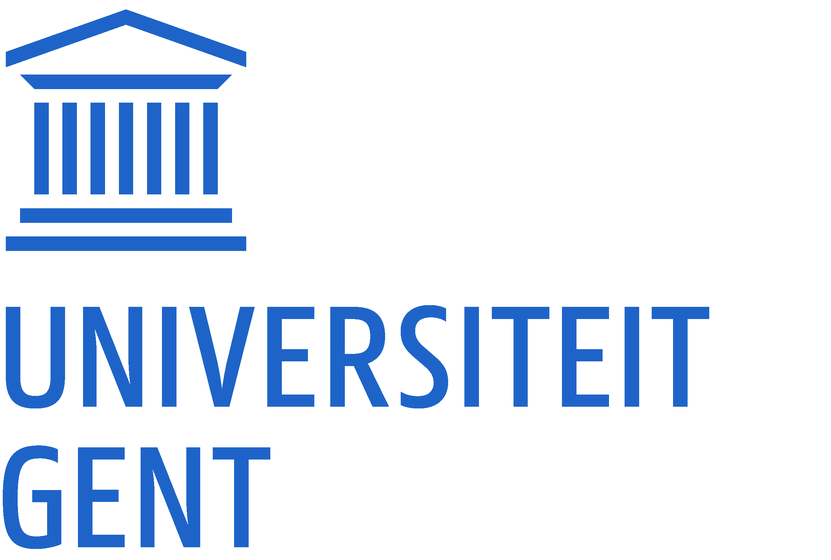 |
| Julien Masquelier Onderzoeker SCIENSANO 02 769 22 48 julien.masquelier@sciensano.be | |
| Elise Tardy Onderzoeker Inagro 051 27 33 93 elise.tardy@inagro.be | 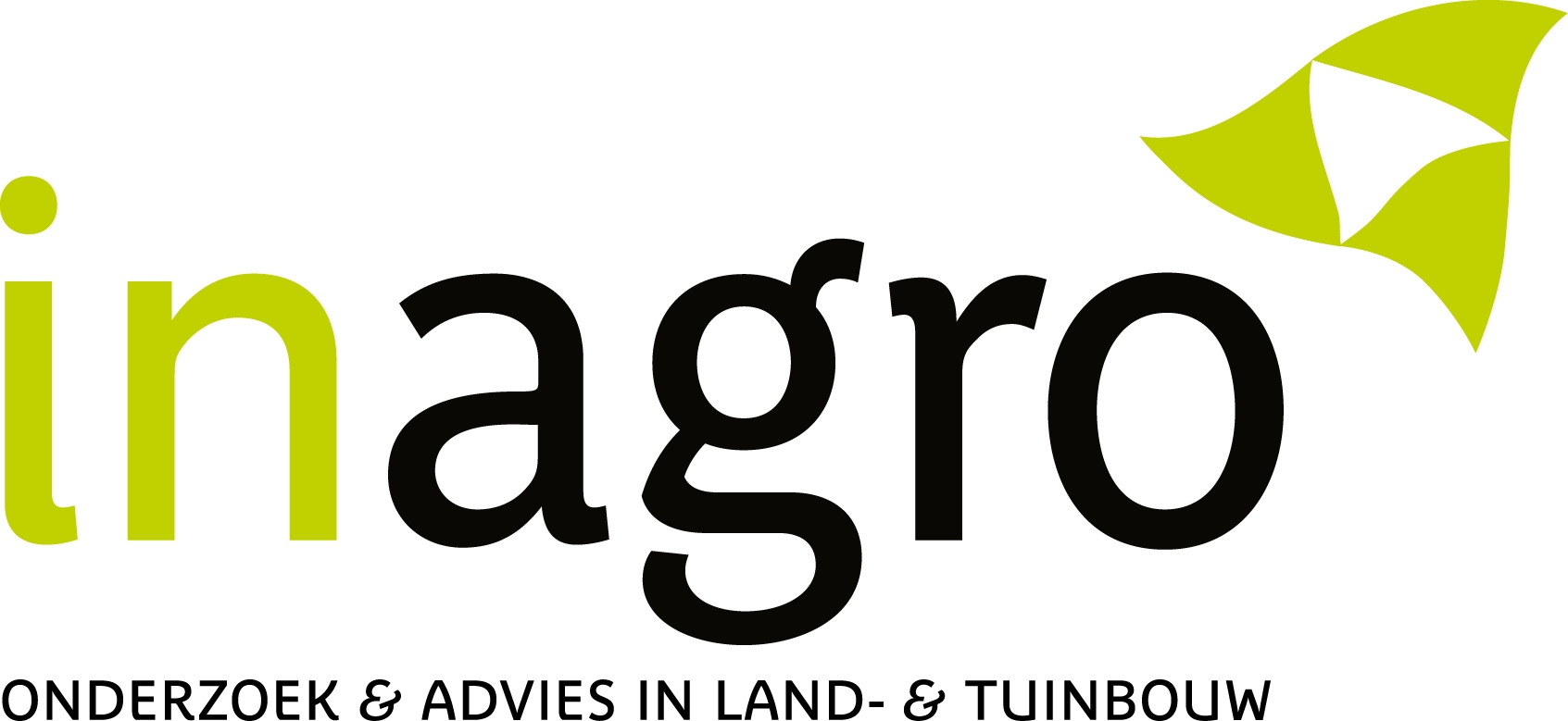 |
| Annick Wilmotte Research Associate FRS-FNRS, ULiège 043 66 33 87 - 0471 61 39 99 Awilmotte@uliege.be | 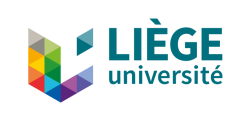 |


